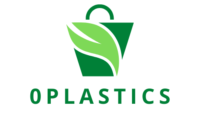Paper bags are commonly used as an alternative to plastic bags, and they offer several benefits and drawbacks, primarily in terms of their environmental impact, durability, and cost.
Benefits of Using Paper Bags:
- Biodegradability: One of the most significant advantages of paper bags is that they are biodegradable and can decompose relatively quickly in the environment. This feature makes them a more environmentally friendly option compared to plastic bags, which can persist for centuries.
- Recyclability: Paper bags are easily recyclable. Recycling paper bags reduces the demand for virgin materials and helps conserve resources, making them a more sustainable choice.
- Renewable Resource: Paper bags are made from wood pulp, which is a renewable resource. Responsible forestry practices can ensure a continuous and sustainable supply of raw materials.
- Safe for Food Contact: Paper bags are safe for carrying food items. They do not leach harmful chemicals or toxins into the contents.
- Customization: Paper bags can be customized with logos, designs, and branding, making them popular choices for promotional and retail purposes.
- Support for Local Economies: The production of paper bags often involves local manufacturing and job opportunities, contributing to the local economy.

Drawbacks of Using Paper Bags:
- Durability: Paper bags are generally less durable and more susceptible to damage from moisture and heavy loads compared to plastic bags. This can limit their usefulness in certain situations.
- Resource Intensive: The production of paper bags can be resource-intensive and energy-consuming. It may involve cutting down trees, water usage, and chemical processing, which can have an environmental impact, particularly if not managed sustainably.
- Bulkiness: Paper bags are bulkier than plastic bags and can take up more space, whether in storage or during transportation. This can be a logistical drawback for businesses and consumers.
- Cost: The production of paper bags and their customization can be more expensive than plastic bags, which may result in higher costs for businesses and, in some cases, consumers.
- Limited Reusability: While paper bags can be reused, they are generally less durable for multiple uses than some other reusable alternatives, such as cloth bags or some plastic bags designed for reuse.
- Energy-Intensive Recycling: The recycling of paper bags can be energy-intensive compared to other materials like glass or metal. Energy is required to remove inks and convert the paper into new products.
- Landfill Space: Even though paper bags are biodegradable, if they end up in landfills, they can still take up space before breaking down. In some cases, landfill space may be limited and valuable.
In summary, paper bags offer several advantages from an environmental perspective, such as biodegradability, recyclability, and the use of renewable resources. However, they have limitations in terms of durability, cost, and resource consumption during production. The choice between paper and plastic bags should consider the specific needs of the user and the environmental impact throughout the bag’s life cycle. To address the drawbacks of paper bags, efforts are being made to improve their durability, increase their use of recycled materials, and enhance their overall sustainability.
